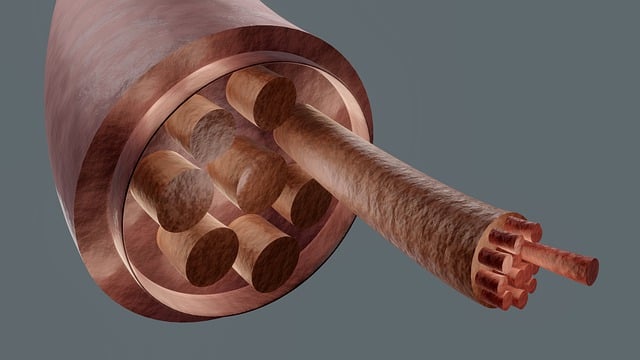Red light therapy (RLT), also known as low-level laser therapy (LLLT), is a non-invasive treatment using specific wavelengths of red light to stimulate cells and promote healing, particularly in muscles. Unlike traditional RICE methods, RLT enhances recovery by penetrating the skin to interact with mitochondria, increasing ATP production, reducing inflammation, alleviating muscle soreness, and speeding up healing without complete rest. It offers deeper tissue penetration than ice and encourages collagen production. For optimal muscle recovery, personalizing your approach with RLT can be beneficial for athletes or those with chronic conditions seeking advanced regeneration compared to conventional methods like RICE.
Red light therapy (RLT) is gaining popularity as an alternative recovery method for athletes and fitness enthusiasts. This innovative approach involves exposing the body to specific wavelengths of red light, claimed to stimulate cellular repair and enhance muscle recovery. While RLT offers a non-invasive solution, traditional methods like rest, ice, compression, and elevation (RICE) have long been the go-to for injury care. This article explores both, comparing their effectiveness and benefits to help you choose the best approach tailored to your recovery needs.
Understanding Red Light Therapy for Muscle Recovery
Red light therapy, also known as low-level laser therapy (LLLT), is a non-invasive treatment that utilizes specific wavelengths of red light to stimulate cells and promote healing. When applied to muscles, it can significantly enhance recovery after intense exercise or physical strain. This therapy works by penetrating the skin’s layers and interacting with mitochondria, the powerhouses of cells, increasing ATP production, which is essential for energy and tissue repair.
The process involves exposing the affected muscles to red light emitters, often in the form of pads or gloves, for a set period. This technology has gained popularity among athletes and fitness enthusiasts as an alternative recovery method due to its potential to reduce inflammation, alleviate muscle soreness, and speed up the healing process compared to traditional methods like rest, ice, compression, and elevation (RICE).
Traditional Recovery Methods: An Overview
Traditional recovery methods have long been the go-to approach for athletes and individuals seeking to alleviate muscle soreness and promote healing. These methods often involve a combination of rest, ice application, compression, and elevation (RICE protocol). While effective, they can be time-consuming and may not provide the same level of targeted treatment as newer alternatives like red light therapy for muscle recovery.
The RICE approach aims to reduce inflammation, pain, and swelling by minimizing physical activity and using cold therapy. However, complete rest can hinder muscle regeneration, and ice may not penetrate deep enough into tissues to stimulate cellular repair effectively. Compression bandages and elevation help with fluid retention and blood flow reduction at the site of injury, but they don’t address the root causes of muscle fatigue and damage.
Comparing Effectiveness and Benefits
When comparing red light therapy for muscle recovery against traditional recovery methods, one key factor is effectiveness. Red light therapy has gained significant attention for its ability to stimulate cellular repair and enhance collagen production, which can significantly speed up muscle healing processes. Studies have shown that this non-invasive approach can reduce inflammation, ease pain, and improve overall recovery time after intense workouts or injuries.
Traditional recovery methods, such as rest, ice, compression, and elevation (RICE), remain foundational in sports medicine. While effective in managing acute injuries and reducing swelling, they may not always address the underlying cellular issues that hinder long-term muscle recovery. Red light therapy offers a complementary approach by directly targeting these cellular levels, potentially providing an advantage over conventional methods for athletes seeking optimal performance and faster return to training.
Choosing the Best Approach for Your Needs
When considering the best approach for your muscle recovery, it’s essential to evaluate your specific needs and preferences. Red light therapy for muscle recovery has gained popularity as a non-invasive, drug-free alternative to traditional methods. It involves exposing the body to red light at specific wavelengths believed to stimulate cellular repair and promote healing. This technology is known for its ability to penetrate deep into tissues, increasing circulation and encouraging the production of collagen, which is crucial for muscle regeneration.
On the other hand, traditional recovery methods like rest, ice, compression, and elevation (RICE) have been the go-to for many years. These methods are often effective for minor injuries or soreness but might not provide the same level of depth in tissue repair as red light therapy. For athletes seeking an edge or individuals dealing with chronic conditions, exploring red light therapy could offer a more comprehensive solution. It’s all about finding the right balance between time-tested techniques and innovative advancements to support your body’s natural healing processes.
In exploring red light therapy for muscle recovery versus traditional methods, it’s evident that both have their merits. Red light therapy offers non-invasive, drug-free benefits like reduced inflammation and accelerated healing. However, traditional recovery techniques like rest, ice, compression, and elevation remain foundational for certain conditions. Ultimately, the best approach depends on individual needs. For those seeking an innovative, modern solution, red light therapy shines brightly. But for more conventional, time-tested methods, traditional recovery practices remain effective. Integrating both into your regimen can provide a comprehensive path to optimal muscle recovery.
